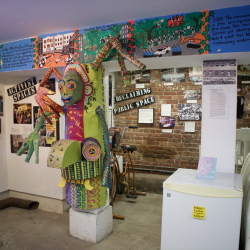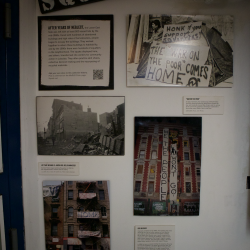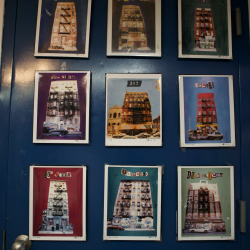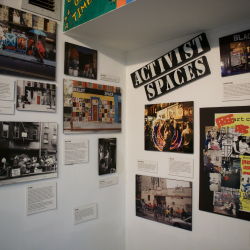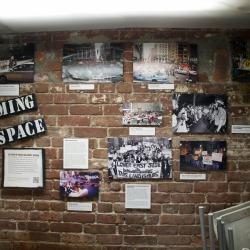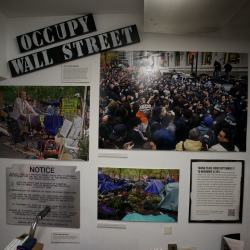Reclaiming Space: Squats
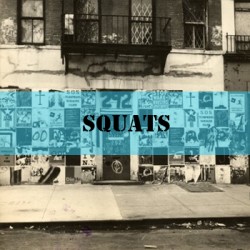
During the 1970s housing crisis, activists, punks, hippies, street kids and other homeless individuals took over and reclaimed derelict buildings on the Lower East Side through mass homesteading and squatting movements. At the peak of these movements in the late 1980s, over 30 squats existed in the Lower East Side, providing homes for nearly a thousand people. The City has since granted many of these older squats limited-equity coop status. Community members transformed buildings from a derelict state into livable homes as shown in these photos and described in the case study below.
Watch this video, Building the Lower East Side Community, made by the Colectivo piloto and MoRUS in summer 2012.
WHAT WE DO
The Museum of Reclaimed Urban Space promotes and archives the work of community activists and artists in the squatting movement, which successfully reclaimed and repurposed derelict housing stock. It affirms those practices as an alternative sustainable strategy for social and community development in blighted landscapes. Public power, informed and armed with specific means and models to transform property ownership, is becoming increasingly relevant, and there are many lessons to be learned by keeping the memory of squatting and homesteading movements alive.
Watch a video of a MoRUS tour to a squat in Umbrella House and another tour of Jane’s apartment.
WHY SQUATS MATTER
Now that we are in another housing crisis, which stems from the mortgage bubble, there is increased interest around the world in building cooperative housing models. Squatting continues, and new squats are continually being created, although they are not widely publicized. Derelict buildings still exist, and following the housing and the mortgage crisis, there is still a need for housing alternatives and a new collective, sustainable, approach to urban housing models. MoRUS promotes that dialogue and learns from the Lower East Side experience.
In her article ‘No Vacancies; Squatters Move In’ Rebecca Burns notes that in the U.S. today, a new wave of squatters is moving into vacant foreclosed properties. The term “squatter” conjures images of the predominantly young, urban hipsters. But with five times as many vacant homes as homeless people in the U.S. today, a new wave of squatters – just as likely to be hard-hit families as young activists making a political statement – is moving into vacant foreclosed properties in cities like Chicago, New York and Minneapolis. With more than 1 billion people worldwide now living in informal settlements, squatters’ communities are among the primary creators of housing in the developing world.
In the context of a global foreclosure crisis, a squatters’ movement is emerging across the developed world to claim otherwise vacant buildings as homes. Self-organizing spaces are a particularly pressing topic in Europe at the moment. “Stories are surfacing about pensioners in Germany squatting a senior center under threat of closure due to lack of funds; of Spanish indignados breaking into sealed, vacant apartment buildings not to squat themselves but to provide living space for recent evictees of all stripes; of Minnesotans fighting the banks and refusing to leave their homes”.
Several of the people involved in the Museum have studied squatting in urban studies programs, have written a thesis on it, or have lived as a squatter past or present. One of our founding directors, Laurie Mittelmann, graduated from Sarah Lawrence College and Oxford University, and worked as an ethnographic researcher in Christiania, the largest squat in Europe. One squatter we work closely with is Fly Orr, a housing activist, graphic artist and squatter who has lived in the East Village since 1980s. She is working on a book, Unreal Estate; A Late Twentieth Century History of Squatting in the Lower East Side. She writes: “I started working up on the sixth floor replacing joists and doing masonry work. I could see all the way down to the first floor. I was eventually granted a space in the building to renovate as my own apartment. This space had no floor or ceiling, the windows were all just gaping holes in the wall and the walls themselves were bare brick in need of extensive repairs. I had to learn to do everything in order to build this place every step of the way.”

